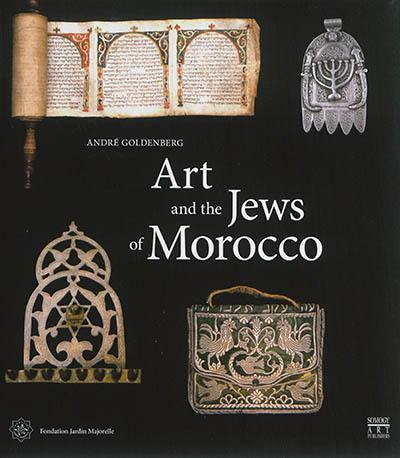
Paru le 15/10/2015 | Relié sous jaquette 239 pages
Tout public
translation from French to English Sharon Grevet
For centuries, in the cities and the countryside, Jewish artistry flourished in Morocco: metals (precious and otherwise), manuscripts, various fabrics, leather, wood, etc. It often resulted in exceptional pieces that express the uniqueness and creativity of the mostly anonymous artisans.
Ethnologist André Goldenberg, a native of Morocco, has devoted much of his life and his knowledge to collecting the pieces in this work, these ritual and secular objects, always of absolute authenticity and extremely high artistic quality.
They reveal the many facets of the magnificent and often overlooked Moroccan Jewish art that his patient research has now rescued from oblivion. This richly illustrated book, a veritable "imaginary museum," lets us see and understand hundreds of masterpieces from prestigious public and private collections in Morocco and elsewhere.
André Goldenberg was born in Marrakech. Some time before, his father had been appointed to one of the Alliance Israélite Universelle's schools in the city. His Moroccan mother was from an old Jewish family from Essaouira. Thus, André Goldenberg's family life was a microcosm of hybrid Judaism, while his education was pursued at Marrakech's French school.
For over forty years, his life in Morocco was a reflection of an amalgam that in no way abnegated his roots. As an employee of the French National Education System, his early interest in the field of photography and aesthetics led to a ten-year assignment with the Cultural Service of the French Embassy and then with various Moroccan audiovisual organizations, the Ministry of Health, the Higher Institute of Journalism, and finally involvement in teacher training.
Shortly after Morocco gained independence, the relationships he had established with a small group of French ethnologists who study Moroccan lifestyles led him to compile documentation, as rich as it was varied, some of which he used to defend his thesis in cultural and social anthropology at the Sorbonne.
After writing a first book on Jewish society (Juifs du Maroc, images et textes, 1984), he turned his attention to the artistic and symbolic aspects of the tangible elements in that environment, and several books bear its stamp (Bijoux du Maroc, depuis le temps des Juifs jusqu'à la fin du XXe siècle, 1999 ; Bestiaire de la culture populaire musulmane et juive au Maroc, 2000 ; Arts et cultures du Maroc, 2004).
The diversity of the circles frequented by André Goldenberg and the eclecticism of his research did not shield him from the upheavals in the Moroccan Jewish communities during the period when the majority of the country's Jews were expatriated. This he witnessed from a front row seat; for the first time, in this book, he has chosen to present a broad panorama of the most remarkable vestiges of their material culture, already on the brink of oblivion.